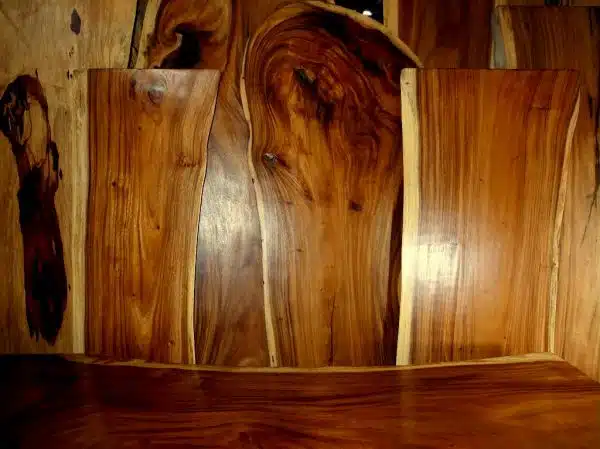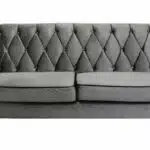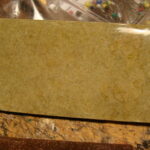Wood furniture is a timeless and elegant addition to any household. However, keeping it clean can be a daunting task, especially if you are not familiar with the proper cleaning techniques. Using the wrong cleaning products or techniques can damage the wood’s surface, resulting in costly repairs. As a professional wood furniture cleaning expert, I have seen firsthand the damage that improper cleaning can cause. In this article, I will share with you the right way to clean your wood furniture and keep it looking beautiful for years to come.
Cleaning wood furniture is not just about removing dirt and grime; it is also about preserving its natural beauty and durability. The first step in cleaning wood furniture properly is to identify the type of finish on the wood surface. Different types of finishes require different cleaning methods and products. Once you have identified the type of finish on your wood furniture, you can then select the appropriate cleaning product and technique that will effectively remove dirt, stains, and grime without damaging the wood’s surface. By following these simple steps, you can maintain your wood furniture’s beauty and durability for many years to come while serving others who admire your home’s elegance.
Preparing Your Wood Furniture For Cleaning
Maintaining the integrity of your wood furniture is essential in prolonging its life and beauty. Before you start cleaning, take the time to prepare the furniture by removing dust and debris with a soft cloth or vacuum cleaner. This simple step will prevent abrasive particles from scratching the surface during the cleaning process.
Choosing the right cleaning products for your wood furniture is crucial in avoiding damage. Avoid using harsh chemicals or abrasive materials that can strip or scratch the finish. Instead, opt for mild soaps, gentle detergents or specialized wood cleaners that are designed to clean without causing harm. Always test new products on a small, inconspicuous area before applying it to larger areas of your furniture.
Tips for preventing damage to wood furniture during cleaning include: never soaking the furniture with water, as this can cause warping and swelling; avoiding excess moisture when wiping down surfaces; and using a soft-bristled brush or cloth to gently scrub away dirt and stains. By following these tips, you can ensure that your wood furniture remains in pristine condition for years to come.
To identify the type of finish on your wood furniture, there are several methods you can use depending on whether it’s painted or stained. Understanding the type of finish is important because different finishes require different cleaning methods. In the next section, we’ll explore how to identify common types of finishes on wood furniture so you can proceed with confidence in selecting appropriate cleaning techniques.
Identifying The Type Of Finish On Your Wood Furniture
First and foremost, identifying the finish on your wood furniture is crucial for proper maintenance. There are numerous types of finishes that can be applied to wood furniture, such as wax, varnish, shellac, lacquer, and oil. Each one requires a different cleaning approach to maintain its original beauty and prolong its lifespan. Before you start cleaning your wood furniture, it’s essential to identify the type of finish to avoid damaging it.
Identifying finishes can be challenging since they may look similar or have no visible signs of what type of finish is applied. Some finishes are more durable than others and require less maintenance. For instance, varnish is durable and easy to clean but may need regular touchups over time. On the other hand, shellac is less durable and more prone to damage from alcohol or water spills. Therefore, identifying the finish on your wood furniture will help you determine the right approach for cleaning it.
In summary, identifying the type of finish on your wood furniture is critical for proper care and maintenance. Understanding how each finish reacts to different cleaning methods will help prevent damage or premature aging of your furniture. By knowing this information beforehand, you can ensure that your wood furniture remains in excellent condition for years to come. In the subsequent section about cleaning unfinished wood furniture, we’ll explore some tips for maintaining bare wood surfaces without any protective coatings.
Cleaning Unfinished Wood Furniture
Cleaning unfinished wood furniture requires a gentle approach to prevent damage. Begin by removing any dust and debris with a soft-bristled brush or a vacuum cleaner using a soft brush attachment. Avoid using water or any cleaning solution as it can cause the wood to warp, stain or discolor.
If there are stubborn stains, use sanding techniques to remove them gently. First, sand lightly with fine-grit sandpaper in the direction of the grain. Then, wipe away any dust before repeating the process with medium-grit sandpaper followed by fine-grit sandpaper again. Once you have removed the stain, wipe away all dust and debris from the surface thoroughly.
To protect your unfinished wood furniture against spills and stains, apply wood sealant according to the manufacturer’s instructions once you have cleaned it. The sealant will penetrate deep into the wood pores and create a protective barrier that repels liquids and dirt. Applying wood sealant is essential for prolonging your furniture’s lifespan while keeping its natural beauty intact.
Transition into Cleaning Oiled Wood Furniture:
Now that you know how to clean unfinished wood furniture let’s move on to cleaning oiled wood furniture. This type of furniture requires special care as oil finishes add depth and character to natural wood grains. To maintain the beauty of oiled wood furniture without stripping its finish, special attention must be given when cleaning it.
Cleaning Oiled Wood Furniture
When it comes to cleaning oiled wood furniture, it’s essential to handle the task with care to prevent any irreversible damage. Applying oil is a great way of maintaining the shine and enhancing the natural beauty of your wooden furnishings. However, over time, dirt and grime can build up, making your furniture look dull and lifeless.
To start cleaning your oiled wood furniture, ensure that you have the right products for the job. Avoid using harsh chemicals or abrasive tools as these can cause scratches or strip away the protective layer on the wood. Instead, opt for mild solutions such as vinegar diluted in water or specialized wood cleaners that are specifically designed for oiled wood.
When applying oil to your wooden furniture, use a soft cloth and gently rub in circular motions until you achieve an even coverage. Allow sufficient time for the oil to penetrate the wood before buffing off any excess with a clean cloth. Repeat this process every six months or when you notice that your furniture is looking dry or losing its luster. By following these simple steps, you’ll be able to maintain your oiled wood furniture’s shine and keep it looking new for years to come.
Moving on from cleaning oiled wood furniture, let’s take a look at how to care for lacquered wood furnishings. Unlike oiled wood, lacquered surfaces have a hard protective coating that shields against scratches and moisture damage. However, cleaning lacquered wood requires specific products and techniques to maintain its finish properly.
Cleaning Lacquered Wood Furniture
How do you clean lacquered wood furniture without damaging it? This delicate material requires gentle care to maintain its beauty and integrity over time. Here are some top tips for keeping your lacquered wood furniture looking its best.
Use the best products: Choose non-abrasive cleaners specifically designed for lacquered wood furniture. Avoid using harsh chemicals or abrasive materials that can scratch or damage the surface.
Tips for avoiding damage: Always test a small, inconspicuous area first to make sure the cleaner won’t discolor or damage the finish. Use a soft cloth and gentle pressure to wipe down the surface, avoiding excess moisture and wet spots.
Maintenance techniques: Regular dusting and occasional polishing with a high-quality furniture wax can help protect your lacquered wood furniture from scratches, fading, and other types of wear and tear.
Protective coatings: Consider adding a protective coating to your lacquered wood furniture, such as a clear spray-on varnish or sealant. This can help keep the finish looking new while also providing extra protection against spills, stains, and other potential damage.
Some common mistakes in cleaning lacquered wood furniture include using abrasive materials like steel wool or sandpaper, leaving wet spots on the surface, and not testing products before use. By following these tips and taking care to avoid these common errors, you can keep your lacquered wood furniture looking beautiful for years to come.
Next up: cleaning varnished wood furniture. While this material is similar to lacquered wood in some ways, there are specific techniques you’ll need to know in order to clean it effectively without causing any damage.
Cleaning Varnished Wood Furniture
Varnished wood furniture is commonly used and adds a touch of class to any room. However, with time, it may lose its shine and develop scratches. To clean varnished wood furniture, several methods can be used, but one of the most effective is using vinegar. Vinegar is an excellent natural cleaning agent that effectively removes dirt and grime from furniture without causing any damage.
To use vinegar for cleaning varnished wood furniture, mix equal parts of white vinegar and water in a spray bottle. Spray the solution onto a soft cloth and wipe the surface of the furniture gently. Be sure not to oversaturate the cloth as this could cause damage to the varnish. After wiping down the surface, go over it again with a dry cloth to remove any excess moisture.
Scratches on varnished wood furniture can be unsightly and diminish its appearance. There are several ways to remove scratches from varnished wood furniture depending on their severity. For minor scratches, apply a small amount of vegetable oil or petroleum jelly directly onto the scratch and leave overnight. The next day, wipe off any excess oil or jelly with a soft cloth until completely clean. For deeper scratches, apply a mixture of equal parts olive oil and white vinegar onto the affected area using a soft cloth until fully saturated.
With these simple steps, you can maintain your varnished wood furniture’s beauty for years to come effortlessly. In the next section, we will explore how to clean painted wood furniture using safe and effective methods that leave no residue behind.
Cleaning Painted Wood Furniture
After discussing how to clean varnished wood furniture, let’s now move on to cleaning painted wood furniture. Similar to cleaning varnished wood furniture, it’s important to avoid using harsh chemicals when cleaning painted wood furniture. These chemicals can strip the paint and damage the surface of the furniture.
One effective and natural way to clean painted wood furniture is by using vinegar and baking soda. Mix equal parts of water and vinegar in a spray bottle and spritz it onto the surface of the furniture. Then, sprinkle baking soda onto the damp surface and scrub gently with a soft-bristled brush. Rinse with water and dry thoroughly.
When cleaning painted wood furniture, remember to be gentle and avoid scrubbing too hard or you may remove some of the paint. Additionally, always test any new cleaning solution on an inconspicuous area first before applying it to the entire piece of furniture.
Moving forward, if your painted wood furniture has stains that won’t come out with regular cleaning methods, don’t worry! There are still ways to remove those stubborn stains without damaging your beautiful piece of furniture. Let’s explore that in more detail in our next section.
Removing Stains From Wood Furniture
Did you know that 85% of wood furniture stains are caused by liquids? Removing tough stains from wood furniture can be a daunting task, but it is not impossible. Before starting the cleaning process, identify the type of stain on your furniture to determine the appropriate cleaning method. For instance, grease stains require a different approach than ink stains.
To remove tough stains like ink or red wine from wood furniture, use a mixture of baking soda and water to create a paste. Apply this paste on the affected area and leave it for 30 minutes before wiping it off with a clean cloth. Additionally, you can use vinegar mixed with olive oil to remove watermarks or rings left by glasses or cups. Simply mix equal parts of vinegar and olive oil and apply it to the affected area with a soft cloth.
To prevent future stains on your wood furniture, it’s essential to take some precautions. Always use coasters under glasses and cups to avoid leaving water rings on your furniture. Also, place mats or tablecloths under food containers or hot dishes to prevent spills that may cause tough-to-remove stains. By taking these simple steps, you can keep your wood furniture looking great for years without worrying about stubborn stains.
When dealing with water damage on wood furniture, immediate action is crucial. The longer you wait before addressing the issue, the more difficult it becomes to fix the damage caused by water. In the subsequent section, we will discuss how to deal with water damage effectively without damaging your precious wood furniture further.
Dealing With Water Damage On Wood Furniture
After dealing with stains on your wood furniture, it’s important to take the necessary steps to prevent water damage from occurring. Avoid placing your furniture near windows or doors that are frequently opened during wet weather. Also, be cautious of placing wet items directly onto the surface of your furniture. Use coasters and placemats to protect the wood from water rings and spills.
If you do find yourself with water damage on your wood furniture, it’s essential to act quickly. The longer you wait, the more difficult it will be to remove the damage. First, remove any excess moisture with a dry cloth or paper towel. Then, use a fan or dehumidifier to dry out the area completely. If there is still visible damage, lightly sand the area and apply a wood finish that matches the rest of your furniture.
Preventing water damage and properly fixing any existing damage is crucial for maintaining the longevity of your wood furniture. By taking these preventative measures and addressing any issues as soon as they arise, you can ensure that your furniture stays in top condition for years to come. In our next section, we’ll cover how to polish your wood furniture for a beautiful shine that will last even longer.
Polishing Your Wood Furniture
Dusting is an important step in the process of cleaning wood furniture, and should be done regularly to prevent a build up of dust and dirt. A soft, dry cloth should be used to dust the furniture, and should be done in a gentle, circular motion to prevent scratches. Polishing products should be used with caution, and the product should be tested on an inconspicuous area of the furniture first to check for colorfastness. Polishing should be done in the direction of the wood grain, and with a soft cloth to avoid leaving streaks.
Dusting
When it comes to cleaning wood furniture, the first step is always dusting. Dust can accumulate on the surface of your furniture, making it look dull and lifeless. To properly dust your wood furniture, it is important to use microfiber cloths that are gentle and effective in removing dust without scratching the surface. Avoid using feather dusters or dry cloths as they may only push the dust around and scratch the wood.
Using microfiber cloths is one of the best ways to remove dust from your wood furniture. These cloths are designed to trap and hold onto dirt particles effectively, leaving surfaces clean and shiny. When choosing a microfiber cloth, make sure to select one with a tight weave that won’t snag on any rough spots or splinters on your furniture.
To achieve optimal results when cleaning your wood furniture, it’s essential to also use the best cleaning products available. There are many excellent wood cleaning products on the market that will help you get rid of stubborn stains and grime while protecting your furniture’s natural beauty. Make sure to apply these products sparingly and gently rub them into your furniture using a circular motion for best results. By following these tips, you’ll be able to maintain the beautiful appearance of your wood furniture for years to come.
Polishing Products
When it comes to polishing your wood furniture, choosing effective and eco-friendly polishing products is crucial to achieving a streak-free shine. There are many types of wood polishing products available in the market, but not all of them are suitable for every type of wood furniture. It is essential to choose a product that is specifically designed for your furniture’s surface.
Before applying any polish, make sure to dust your furniture thoroughly using a microfiber cloth. This will help remove any dirt or debris that may scratch the surface when you begin polishing. Once you have cleaned the surface, apply the polish sparingly and evenly over the entire piece of furniture. Make sure to use circular motions while rubbing in the polish for an even finish.
When selecting a wood polishing product, consider choosing one that is eco-friendly and has natural ingredients. These types of polishes can protect your furniture from harmful chemicals while still providing excellent results. Additionally, always read the instructions carefully before using any new product on your wood furniture to avoid damaging its finish. With proper care and maintenance, your wood furniture can maintain its beauty and durability for years to come.
Maintaining Your Wood Furniture’s Beauty And Durability
As a professional wood furniture cleaning expert, I have seen many homeowners make mistakes when it comes to preserving the beauty and durability of their wooden pieces. Fortunately, proper maintenance can prevent scratches and protect against moisture damage, keeping your furniture looking great for years to come.
To ensure your wood furniture stays in top condition, here are five tips to keep in mind:
- Dust regularly using a soft cloth or feather duster to remove surface dirt and debris.
- Use a high-quality furniture polish or wax to nourish and protect the wood from drying out.
- Avoid placing hot or wet items directly on wooden surfaces as they can cause unsightly stains or warping.
- Keep your furniture away from direct sunlight as this can cause fading and discoloration over time.
- Use coasters or placemats under glasses, plates, and other objects that could scratch the finish of your furniture.
By following these simple steps, you can help protect your wood furniture against daily wear and tear. However, even with regular maintenance, accidents can still happen. In the next section, we will explore common mistakes to avoid when cleaning wood furniture to help you keep your pieces looking their best.
Common Mistakes To Avoid When Cleaning Wood Furniture
When it comes to cleaning wood furniture, avoiding damage is key. One of the most common mistakes people make is using too much water when cleaning their wooden surfaces. Excessive moisture can lead to warping and cracking, which are both difficult and expensive to repair. Furthermore, if you’re using a cloth to clean your furniture, avoid using one that’s too abrasive or scratchy as it can leave unsightly marks on the surface.
Another mistake to avoid is choosing the wrong cleaning products for your wood furniture. Some cleaners contain harsh chemicals that can strip away the protective finish on your furniture or cause discoloration over time. When shopping for cleaning solutions, look for ones that are specifically designed for use on wood surfaces. These products will help maintain the natural luster of your wood while protecting it from damage.
In addition to choosing the right cleaning products, it’s also important to follow manufacturer instructions carefully. Some types of wood require special care and attention, so be sure to read up on your specific piece before beginning any cleaning regimen. By avoiding these common mistakes and taking proper precautions when caring for your wooden furniture, you can keep it looking beautiful and new for years to come.
Transition: Now that we’ve covered some of the most common mistakes people make when cleaning their wood furniture, let’s move onto a more natural approach – using natural cleaning solutions.
Using Natural Cleaning Solutions For Your Wood Furniture
After discussing the common mistakes to avoid when cleaning wood furniture, it’s time to explore natural cleaning solutions. Using vinegar solution is a popular choice for eco-friendly wood furniture cleaners. Mix equal parts of white vinegar and water, and apply with a soft cloth. Avoid using too much moisture as it can damage the wood surface. Vinegar not only cleans but also disinfects your wood furniture.
Another natural wood furniture cleaner is lemon oil. It’s an excellent choice for polishing and conditioning your furniture. Mix lemon oil with olive oil or jojoba oil, and apply with a soft cloth in the direction of the grain. Lemon oil not only cleans but also protects your wood furniture from drying out and cracking.
DIY wood furniture cleaners are becoming more popular as people become aware of harmful chemicals in conventional cleaners. There are many recipes available online that use natural ingredients like vinegar, baking soda, and essential oils to create homemade wood furniture cleaners. By following these best practices for cleaning your wood furniture, you can ensure that it remains in top condition for years to come.
When it comes to maintaining your wood furniture, there are plenty of tips and tricks at your disposal. However, sometimes hiring a professional wood furniture cleaner is necessary for deep cleaning or restoration services. In the next section, we’ll discuss what to look for when hiring a professional and how they can help maintain your beautiful pieces of furniture.
Hiring A Professional Wood Furniture Cleaner
Hiring a professional wood furniture cleaner can be a great investment for those who want to keep their furniture looking its best. The benefits of having your furniture professionally cleaned are numerous. First, professionals have the expertise and experience necessary to clean your furniture thoroughly and safely. This means that they can remove dirt, grime, and stains without damaging the wood or finish.
Another benefit of hiring a professional is cost effectiveness. While it may seem like an added expense, having your furniture professionally cleaned can actually save you money in the long run. This is because professionals can help prevent damage to your furniture that could lead to costly repairs or replacements down the line.
When choosing a professional wood furniture cleaner, it is important to do your research and find someone who has experience with the type of furniture you have. Look for someone who uses environmentally friendly cleaning products and has good reviews from previous customers. By hiring a professional, you can ensure that your furniture stays in top condition for years to come.
Transition: Now that you know about the benefits of hiring a professional wood furniture cleaner, let’s move on to some frequently asked questions about cleaning wood furniture at home.
Frequently Asked Questions About Cleaning Wood Furniture
Hiring a professional wood furniture cleaner can be a great option for those who want to ensure that their furniture is cleaned properly. However, it is important to note that hiring a professional can be quite expensive and may not always be necessary. There are several things that you can do on your own to keep your wood furniture looking great.
One of the most common mistakes that people make when cleaning their wood furniture is using too much water. Wood is porous, which means that it can absorb water easily. When too much water is used during cleaning, it can cause the wood to warp or even crack over time. To avoid this, use a damp cloth instead of soaking the furniture in water.
Another common mistake is using harsh chemicals or cleaners on wood furniture. These types of cleaners can strip away the natural oils in the wood, causing it to dry out and become brittle over time. Instead, opt for natural solutions such as vinegar and olive oil. Mix equal parts vinegar and olive oil together and apply to a clean cloth. Use this mixture to wipe down your wood furniture, being careful not to use too much liquid.
When it comes to cleaning your wood furniture, there are many natural solutions that you can use instead of harsh chemicals. By avoiding common mistakes such as using too much water or harsh cleaners, you can keep your wood furniture looking great for years to come. Remember to always test any new solution on an inconspicuous area before using it on the entire piece of furniture.
Conclusion
In conclusion, cleaning your wood furniture is an essential task that requires a thorough understanding of the type of finish on your furniture. Preparing your furniture for cleaning is crucial to prevent any damage or discoloration. It is important to avoid common mistakes, such as using abrasive cleaners or scrubbing too hard, which can cause permanent damage to your furniture.
One interesting statistic to consider is that in the United States alone, approximately 10 million tons of furniture are discarded each year. This staggering amount of waste could be reduced if people took better care of their furniture and cleaned it regularly. By investing time and effort into maintaining your wood furniture properly, you can extend its lifespan and reduce unnecessary waste.
If you do not feel confident in your ability to clean your wood furniture effectively, consider hiring a professional cleaner who has the expertise and knowledge necessary to get the job done right. By following these guidelines and taking proper care of your wood furniture, you can ensure that it will last for years to come.
Image Credits
- “RECLAIMED WOOD FURNITURE” by IndoGemstone (featured)





























